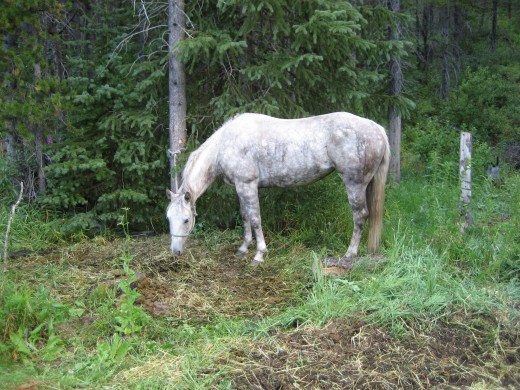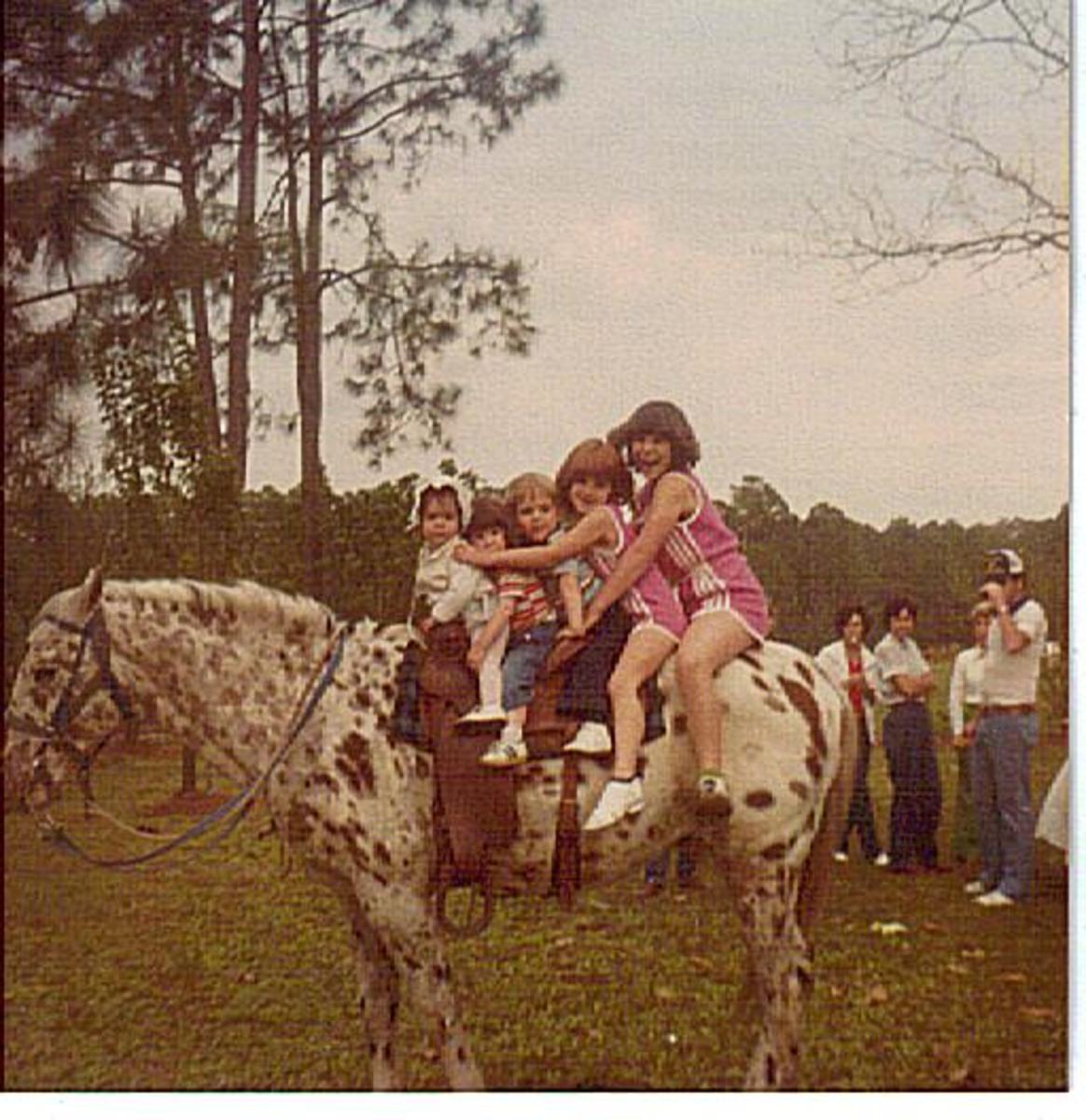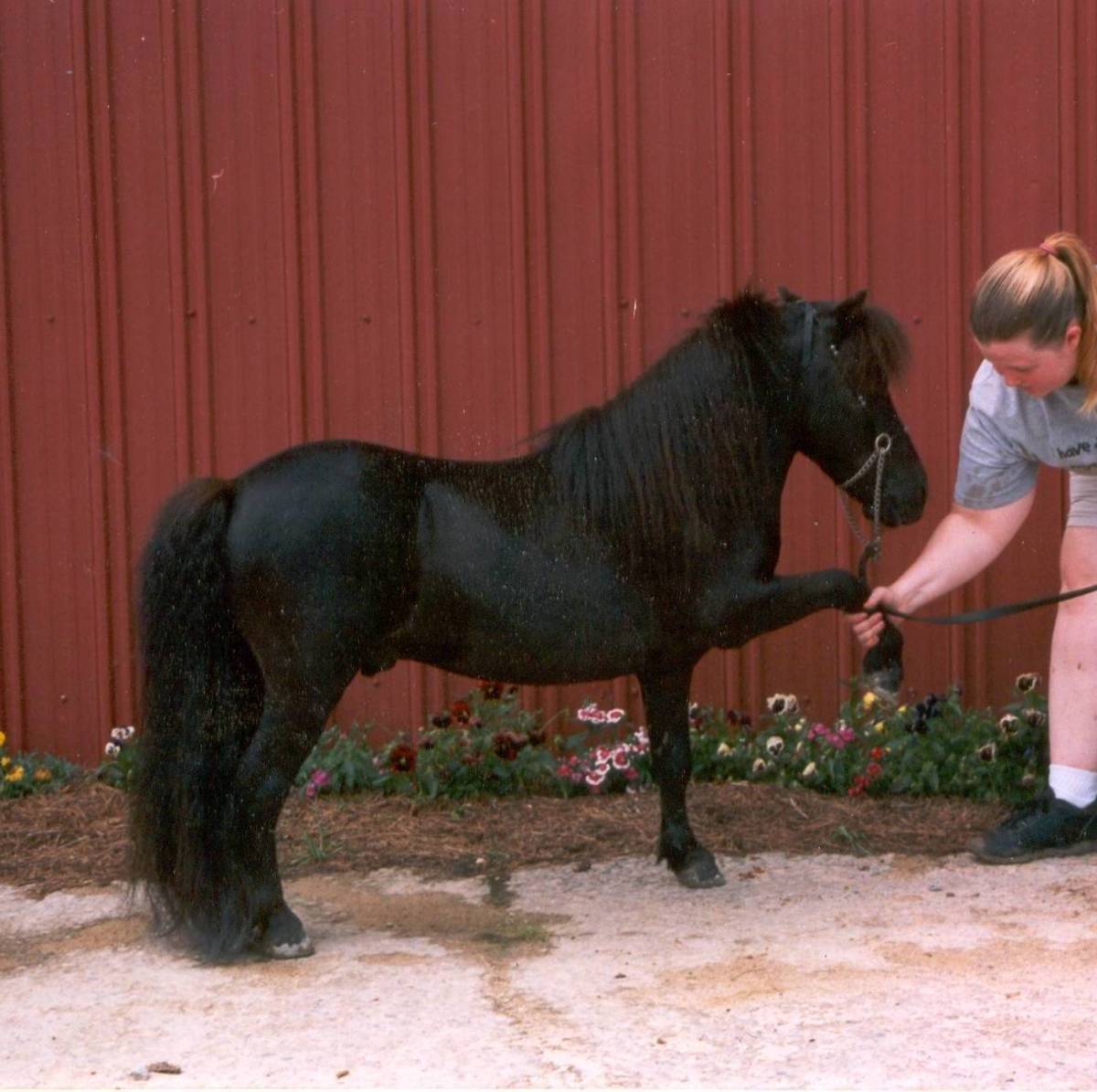Dealing With Mareishness
A Mare is A Mare...
Just about everyone with experience in the horse world will insist that mares are different from geldings. I have even known trainers to go as far as to say that inexperienced riders and children should not handle mares.
At the same time, some of the best beginner horses I have known have lacked a Y chromosome. Why do mares have the reputation they do, and how can one 'manage' it, deal with it and prove it wrong?

Heat Cycle
Mares, like almost all mammals, have a regular heat cycle. A typical mare comes into heat every three to four weeks during the summer. When the day length and average temperature drop, she goes into what is called winter anoestrus, and does not ovulate again until spring.
Thoroughbred breeders often use ultraviolet lights in barns to encourage mares to ovulate earlier in the year. Because all Thoroughbreds have an 'official' birthday of January 1, it is an advantage to breed mares early.
Riding under lights at night, therefore, can shorten a mare's period of winter anoestrus and cause her to cycle for more of the year. Mareishness is generally associated with the mare's heat cycle.
Heat Cycle 'Symptoms'
With some mares, it is almost impossible to tell when they are in heat unless there is a stallion (or a particularly cute gelding) around. Others will let their condition be known very loudly indeed.
The proof of a mare being in heat is that she will 'show' to male horses. Some mares show only to stallions, others will, indeed, show to geldings. They may show more to some males than to others. When a mare 'shows', she lifts her tail, holds it to one side and pushes the area around her vulva outwards, resulting in a 'wink' effect. I have encountered mares that will even show to other mares and to humans (of both sexes). Showing may also be accompanied by coy or cute glances in the direction of the attractive male.
Mares who are in heat will also tend to urinate more frequently, and some appear to suffer from symptoms similar to overactive bladder - they will stand as if they intend to urinate, but nothing will come out.
There is strong evidence that some mares experience painful symptoms as they come into heat. I have seen a mare stand miserably with her sides actually rippling from cramps. Some mares will refuse to allow the girth to be fastened if they are in heat, which may also indicate pain.
Mareishness boils down to two things, alone or in combination. Either the mare is so horny she is unable to concentrate on her work, and would rather spend her time flirting with anything that might make her feel better. Or she is actually experiencing bloating, uterine cramps or other physical symptoms. Or both.
Why Not Spay?
The obvious conclusion most non horse people would come to is the simple one - if you don't intend to breed her, why not sidestep the entire issue by having her spayed?
Sadly, this is not an answer for most people. Horses are large animals that seldom tolerate anesthesia well. A traditional abdominal spay is extremely expensive and carries a very real risk of losing the mare. Unlike bitches or queens, which can generally come home immediately, mares that have been spayed have to spend up to two weeks at the veterinary hospital, and then another month on box rest. It is usually three months before the mare has fully recovered.
A laparoscopic spay, performed with only a local anesthetic and involving much smaller incisions is available to some owners. With this approach, the mare still requires about two weeks of box rest and thirty days out of work, and it also scars. Vaginal spay is the best method, but requires a lot of expertise and is generally available only at major veterinary hospitals.
Because of this, mares are generally only spayed if there is a very real reason to do so. Mares with ovarian tumors often become dangerous and spaying becomes the only alternative to return them to normal behavior. Such mares stop acting like mares at all - in fact, their behavior resembles stallions and some even start to develop male characteristics such as a cresty neck.
Drugs, Etc.
There are a number of things you can do for a mare who has problems when she is in heat. First of all, if you suspect your mare has cramps or bloating, she might well appreciate a dose of bute.
The standard treatment for difficult mares is a drug called 'Regumate'. Regumate is a synthetic progesterone that is administered orally...usually added to the mare's grain. It works in a similar way to the human birth control pill, suppressing estrus and dampening out hormonal changes. (Regumate is also sometimes used to prevent early miscarriages in broodmares). However, Regumate has a major downside. The drug is dangerous to human women and can be absorbed through the skin. It can cause menstrual irregularities, fertility problems and miscarriages. Protective gloves should be used, ideally disposable gloves (so the gloves themselves do not soak up the drug). Ideally, if you can get a man to mix it, do...although protective gloves should be worn, the hormone is not particularly dangerous to males.
As Regumate is so dangerous, a number of alternatives have come onto the market. In England, a herb called 'monkswort' is commonly used. Monkswort is a testosterone inhibitor and is therefore useful if your mare is too busy flirting to concentrate (It is called monkswort because it was once traditionally slipped into the food of monastic novices). There are also several herbal mixes on the market that work, but not for all mares. You might have to try more than one before finding the ideal solution for your mare.
Training
The other element in dealing with 'mareishness' is training. Just as it is vital to ensure that a stallion knows that work time and play time should be kept separate, many mares need a certain amount of instruction in it.
It is important to clearly and firmly refuse to tolerate flirting during schooling and at shows. And yes, this might mean occasionally giving her a smack if she insists on whickering to that cute gelding. (Heck, I've known geldings that need a reminder to please concentrate and stop staring at that cute Quarter Horse butt, ahem, Bo). Obviously, if a mare is showing signs of being in pain, it might be time to give up for the day, but it IS possible to teach a mare 'heat manners' and that if she really wants to flirt, she can do it later in the pasture.




